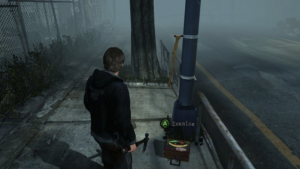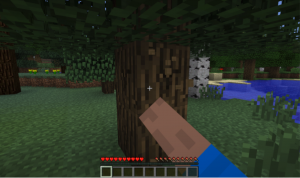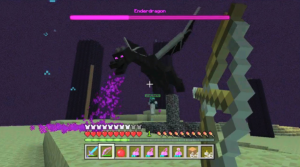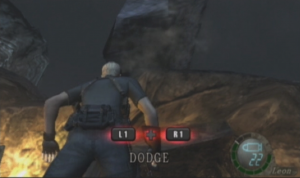If you were to ask me two years ago what my Xbox Gamerscore was or how many platinum trophies I had on my PlayStation account, I would have probably responded disdainfully that I don’t care about achievements and trophies. To a degree, this is still true: storytelling is my primary interest in video games, so the practice of achievement hunting, going out of my way to get these typically extraneous bonuses, shouldn’t mean anything to me. However, I can’t help but notice that I now have eleven platinum trophies on my PSN account, with a handful of others in progress; and these aren’t all trivially easy platinum trophies, either. This got me wondering why I put in the time and effort to obtain the trophies I have: after all, if storytelling is my primary concern, then surely optional trophies should mean nothing to me, and the only trophies I should have are ones that I got by accident, or ones that I unlocked naturally in the course of the story.
In thinking about this, I started to ponder how, if at all, the trophies I’d obtained were related to storytelling. I started imagining how I might have designed the trophies for these games, so as to enhance the games’ stories. In so doing, I realized that there is, in fact, a great deal of (largely untapped) potential for using achievements to add to a story. I would like to argue that achievement systems, when used appropriately, can enhance games’ stories in a number of interesting ways, and that the medium is better off for their existence. (NB: From this point onward, I will use the term “achievement” to represent the general concept of a system in which a list of optional accomplishments is maintained over time, and not necessarily the specific systems used by Xbox and Steam.)
Achievements as Subtle Forward Encouragement
For years, video game writers have been struggling with a key problem in interactive storytelling. Storytellers want to innovate and tell new stories, and the obvious way to do that is to incorporate video games’ salient feature, player choice, into the storytelling process. However, this creates a problem: if players are free to make choices as they progress through the story, then there is no guarantee that players will see all of the story content presented. Moreover, forcing them to do so would impinge on the important “interactive” aspect of interactive storytelling: players who crave an interactive storytelling experience will bristle at not being permitted to influence how the story unfolds in any significant way, while players who don’t necessarily want this freedom of choice won’t get much more out of the story than they would have if they’d watched it in a movie or read it in a book, giving them little reason to consider video games especially important as a storytelling medium.
Achievements can provide a handy solution to this problem. They can be used as a subtle and indirect way of nudging players forward in the story, allowing players the “choice” of moving forward along what may be, in reality, a wholly linear experience. This method gives the illusion of freedom of choice without forcing storytellers to accommodate an infinite number of potential choices made by players. The achievements can incite the curiosity of the player, prompting them to make a conscious choice to take action, and if storytellers can predict this action reasonably often, they can incorporate the result thereof into story progression.
As a matter of fact, a similar technique was already being used before achievements even existed: in many 3D platformers, from Mario to Sly Cooper, game designers used collectibles to subtly lead players toward an objective. Players would go to a location to grab the collectibles, and hey, what do you know, there would just happen to be something important there! I envision achievements being used in somewhat the same way.

In this shot from Sly Cooper and the Thievius Raccoonus, coins are being used to lead the player through a tutorial.
For a more concrete example of this practice in action, I’d like to discuss the game Silent Hill: Downpour. This game contained side quests, something entirely new to Silent Hill (with the exception of that business with Dr. Kaufman and the Aglaophotis in the first game). Each side quest in Silent Hill: Downpour has an achievement attached to its completion, with another achievement (“Silent Hill Tour Guide”) awarded for completing all of them. Since side quests were new to Silent Hill, achievements were a convenient way to let players know about them. More importantly, the side quests usually contributed to the overall storytelling experience by painting a fuller picture of the town and some of its residents. They help the town of Silent Hill feel more alive, and we can thank the achievements (in part) for cluing us in to their existence.

One of my favorite side quests in Silent Hill: Downpour is “Ribbons”, which tells a little story about the fullest extent of a mother’s love.
Telling the story in this way, encouraging players to see what they could do in the town, was of special importance here, considering that Silent Hill has emphasized exploration in its gameplay right from the beginning. Usually, however, the games’ definition of “exploration” was “forcing the player to turn a succession of buildings upside down looking for obnoxiously well-hidden keys in order to unlock doors and progress along what was ultimately just a straight path anyway”. Silent Hill: Downpour, by contrast, made its exploration more open-ended with the introduction of side quests and the related achievements: there was still a linear path to follow through various buildings, but players were rewarded for taking detours from the main story, allowing for exploration to be of some consequence. How ironic is it that a series that has been so interested in exploration didn’t allow for nonlinearity until its eighth entry?
In fact, Silent Hill: Downpour’s use of achievements and side quests didn’t just exist in parallel to the main story; they would sometimes cleverly dovetail into it, making players think they were just going for an achievement, while in reality, they were also moving along toward the next plot-relevant event. One side quest in particular ends at the difficult-to-find next bit of the main story. I remember it well: I had just completed a side quest in an abandoned apartment building and was trying to find my way out when, seemingly by chance, I stumbled across the cutscene that continued the main story. This moment felt wonderfully organic and spontaneous, a far cry from the frustrating walkthrough consultations that plagued my experiences with earlier games in this series. Imagine using achievements in a similar way in other games! It could do wonders for increasing the feeling of player agency in a story while maintaining a linear overall experience.
Achievements and Emergent Storytelling
Achievements can also be particularly helpful for game designers who want to incorporate emergent storytelling into their games. Emergent storytelling is a form of storytelling unique to interactive artistic mediums, especially video games, in which the actions taken by a participant (in this case, a player) are retroactively thought of as constituting a story. Emergent storytelling experiences usually have no explicitly mandated forward direction a participant is required to take; at most, they may have some kind of context or setting to surround the events, but a crucial aspect of the experience is that the story “tells itself” through the spontaneous actions of a participant.
Equally important as the “emergent” part of that phrase, however, is the “storytelling” part. An emergent storytelling experience is one that, while formed largely by the actions of participants, is designed, at least in a broad manner, by an auteur with the intent of constructing a narrative. Crafting an emergent storytelling experience that is both coherent and effective is a tall order. Since storytellers can’t accurately predict what every single participant will choose to do, they can’t use their skills as writers to formulate a story that jives with the participants’ actions and is still coherent enough to convey a specific idea or provoke a desired reaction; if storytellers restrict the participants’ choices in order to more reliably predict what actions they will take, participants will no longer feel they have any control over the way in which the story unfolds, and the flagship selling point of emergent storytelling is lost. Achievements can provide an overall structure while still making this structure optional for participants to follow.
Consider Minecraft. Outside of the tutorial, Minecraft is a game with no mandatory structure or narrative direction whatsoever: although it does technically have an ending, the way in which players get there is left almost entirely up to them, if they even choose to see the ending at all. All Minecraft does is to present a world and the tools to manipulate said world.

Punching trees is not advisable in real life, but it’s probably the first thing you’ll need to do in Minecraft.
At first, this lack of narrative direction seems rather damaging to Minecraft’s claim to artistic significance within an entertainment medium. The usefulness of storytelling for presenting ideas and stirring up emotions has been well established since mankind’s infancy; indeed, storytelling was one of the first things we learned how to do, after making fire. Without a carefully considered story, without compelling characters, this game shouldn’t have the ability to provoke deep emotional reactions or impart ideas to the audience as effectively as a game with a more clearly defined narrative arc — and yet, I distinctly remember the End Poem, presented to the player after the defeat of the Ender Dragon, moving me to tears.
It was then, as I was reading the Poem, that I realized all that I had been through in the game. I had gone from being an inexperienced, scared, alone wanderer who once got lost underground and tunneled up directly into the crops he had planted behind his dirt house, to being a knowledgeable, organized, dedicated adventurer who could slay a literal dragon. The details of this story are all my own, shaped by my own experiences: personal to me, yet not without the mark of an auteur. I had lived through a structured story that felt unstructured in moment-to-moment gameplay.
The game managed to accomplish this by not giving any context or reason to seek out and defeat the Ender Dragon aside from the achievements “The End?” (unlocked for entering the Ender Dragon’s domain) and “The End.” (unlocked for slaying the Ender Dragon). When players decide to go for these achievements, they believe that all they’re doing is completing an arbitrary, meaningless task, albeit one that requires a great deal of preparation and effort. However, when the Ender Dragon is finally defeated, the End Poem puts all their actions up until that point into perspective, shaping the players’ actions, whatever they may have been, into one of the fundamental story types: The Quest.

“But it’s so adorable! Do we really have to kill it?”
The game is also very clever in that it makes the emotional core of its story relevant to all the players who fight the Ender Dragon. Regardless of what actions the players take or the order in which they occur, there are common elements across all players: preparing to fight the Ender Dragon (without using Creative Mode) requires a great deal of work, as the player starts the game with nothing and must gradually work up to the point at which they are powerful enough to take on the Ender Dragon; and players must engage in repetitive, mundane tasks in order to get to this point.
The End Poem is written in a way that takes advantage of this shared experience to deliver a strongly emotional moment. It is framed as a conversation between two deities whose thoughts the player can only just now hear, despite them having existed all along. They talk about the player having “reached a higher level now,” reminding the player how far they’ve come. They then start making parallels between the experience of playing Minecraft and the journey of life, which works because of how much of Minecraft is completing mundane tasks, just like everyday life. Finally, much of this conversation is framed as the two deities telling the player a story, prompting the player to think about their experiences in the context of storytelling specifically.
The Poem, in and of itself, isn’t particularly affecting, as it lacks context; yet, once you’ve played Minecraft to the end, it gains deeper meaning. The experience of playing Minecraft to the end is, as a whole, greater than the sum of its parts due to the players recontextualizing them based on the End Poem, and the achievements were integral to motivating players to discover this deeper meaning and connect Minecraft’s disparate parts. Without the achievements motivating me and hinting at what might be out there in the wilds of the game’s world, I might never have read the End Poem at all, and I certainly wouldn’t have been through the long and arduous process beforehand of playing the game to the end, which was integral to appreciating the End Poem.
It’s important to note that the emotional effect the game had on me would have been lessened if my progression through the game had been more traditional, with my character being led through a fixed sequence of static events without my consent. The achievement system created an overall structure that it is expected many players will follow, but it is entirely optional.
Because it was optional, I had to make a conscious choice to go for the game’s ending. Because I made this conscious choice, the end result felt more satisfying, as it came with a sense of accomplishment at having achieved something that felt (at least temporarily) important to me, rather than having had goals set for me and having been asked to jump through hoops. Compare this to a more linear game, one with little reason to play except reaching the end, like Resident Evil 4. Resident Evil 4 has deservedly earned its reputation as a classic for several reasons, but there’s a limitation to how much personal investment one can have because there is so little room for player choice in the story progression.

Speaking of jumping through hoops: although Resident Evil 4 is great, I think we can all agree that these absurdly unforgiving quick time events can rot in the deepest parts of Hell.
This is not to say that implementing player choice in a video game story is always a good idea; it’s no less vulnerable to human error than other design decisions. However, when used well, it can be an excellent tool for storytellers to allow players to feel personally connected to the story and thereby intensify players’ emotions at key plot points. In, say, a book, a reader’s emotional investment in the story is vicarious; it depends on the amount of empathy the reader possesses for the protagonist(s). In a video game with well-implemented player choice, emotional moments are more personal, more direct.
I’ve played Resident Evil 4, and I loved it, but I was fully aware at all times that it wasn’t my story: it was Leon’s. Can you really say that you felt directly connected to Resident Evil 4’s story, outside of the sections of pure gameplay? No; you know that at the end, Leon and Ashley rid themselves of the parasite and escape Los Illuminados because that’s the only way the story can truly end. The story exists perfectly well in its own right, without your input; if you don’t have personal stakes in how the story progresses, then you can only rely on your detached interest in the events driving the plot, or on your empathy for Leon and Ashley, despite the former’s smugness and the latter’s ear-splitting shrieks. In Minecraft, the story doesn’t even exist until you, the player, take the initiative to start gathering resources and searching for the portal to the Ender Dragon’s domain.
The achievements in Minecraft allow for a structure that doesn’t feel like a structure. They make Minecraft’s story easy to manage from a storyteller’s perspective, as they can predict what the more emotional moments (or, in this case, emotional moment) will be and capitalize on them (it). However, it doesn’t seriously diminish the feeling of player agency in the way that more linear games do, allowing for players to feel things more strongly when confronted with the End Poem. This is the very essence of emergent storytelling, and we have achievement systems to thank you for fostering this new and fascinating approach to entertainment.
Using Achievements for Foreshadowing
Finally, there is one last potential use for achievements in the context of storytelling: foreshadowing. Foreshadowing has long been an important narrative device, and achievements can provide a novel way to deliver it in video games.
Incidentally, this is something that can provide those oft-maligned unavoidable achievements a reason to exist. Most story-related achievements in games have their titles and descriptions hidden, so as to prevent unduly revealing events in the plot before they happen, but this is not a hard and fast rule: it’s just a convention. Instead of making these achievements hidden by default, game designers could word the achievement descriptions in a way that is vague enough to avoid revealing spoilers, but definite enough to give whatever hint the storyteller wants to communicate about future events.
Many games are already doing this is some form. Think of how many games you’ve played that have the titles of story-related achievements be some sort of pun relating to the actions tied into those achievements. For example, the last console game I completed, Puppeteer, has story-related achievements with titles such as “Death of a Sales Rat”, awarded for defeating deceptive salesman General Rat, and “A Funny Thing Happened on the Way up the Dragon”, awarded for defeating General Dragon after a lengthy segment in which the player climbs up General Dragon’s back. Whether the foreshadowing these achievements provide enriches Puppeteer’s overall storytelling experience is a matter of opinion, but if nothing else, games that do things like this open up the door to other, more unequivocally significant uses of foreshadowing in video games’ achievement systems.

All of Puppeteer’s story-related achievements are awarded upon finishing the game’s boss battles, such as this one against General Dragon. The boss fights are all larger than life and act as the climax of each section of the plot, so it makes sense to have all the story-related achievements be tied into them.
Maybe the achievement descriptions could describe the general emotional impact a scene will provide without explicitly stating what exactly will happen. For example, let’s suppose we’re creating the achievements for a game that follows a traditional love story from one of the participants’ points of view. We might have story-related achievements with the following descriptions:
- “Be stopped in your tracks.”
- “Get closer to the stranger.”
- “Learn to fly.”
- “Notice the cracks.”
- “See the world end.”
- “Go on an adventure with someone new.”
- “Run into an old friend.”
- “Take the good with the bad.”
From these descriptions, we have very little explicitly spoiled in the story, but we have an inkling of the overall arc, as well as the predominant emotional tone at each point. From this list, we know that the protagonist falls in love at first sight, experiences the giddy high of new love, goes through a traumatic breakup, tries to see someone new, and ultimately rejoins with their original romantic partner, deciding that the good outweighs the bad. Foreshadowing in this particular way wouldn’t necessarily be a good storytelling decision, but if the writer decided that foreshadowing would add to the story, this is how it could be done with achievements in a way that doesn’t obviously reveal key plot points.
There is one crucial difference between this kind of foreshadowing and the foreshadowing used in other mediums, however: foreshadowing via achievements is missable. In a book, readers will inevitably (unless they skip around in the story) read the piece of text foreshadowing events before they happen; in a film, the shots that comprise foreshadowing will be seen before the foreshadowed event. By contrast, in a video game, if designers choose to put their foreshadowing in the achievement descriptions/titles, there is a possibility that players will not see it until after the events occur, if they see it at all. The important question, then, is this: can foreshadowing still be useful if it’s not necessarily noticed by players?
I would argue that it can. Granted, some players will completely miss the foreshadowing if it’s delivered via the achievement system; however, many players won’t, and for these players in particular, the foreshadowing becomes all the more potent. Requiring that players deduce the meaning of these achievements for themselves adds a layer of enjoyment to the game through player involvement, one that varies from one player to the next, depending on each player’s specific thought processes and decisions: some players will pick up on the pattern right away, some will never recognize the foreshadowing at all, and each player will arrive at this conclusion in their own way. Video games, more than any other medium, invite the observers to make the experience of enjoying the art their own. Having foreshadowing be encased in the potentially missable achievement system plays to the medium’s strengths: if a player so desires, they can look at the achievement list before the game starts, see the foreshadowing, and create a little meta-game around trying to predict what’s going to happen next in the story; if a player chooses not to do this, they can still enjoy the story as it would have been intended if achievements had never been invented.
Conclusion
Those are just some beneficial uses of achievements related specifically to storytelling, We haven’t even discussed non-story-related ways in which achievements can improve an overall gaming experience, like prompting players to think about the mechanics or the world more closely, or going for a platinum trophy/1000 Gamerscore as a means of adding replay value to a game through added challenge. Achievement systems get a lot of flak from those who play video games for their stories, but it’s important to remember that achievements are ultimately just a tool in a game designer’s toolbox, and like any tool, they can be used well or used poorly. Is achievement hunting always a good practice for supporting a story? Of course not. Are achievements indispensable to good storytelling? Given that achievements didn’t exist until fairly recently, the answer is obviously “no”. However, when achievements are used in clever ways, such as those discussed above, I believe they can help facilitate good storytelling in a way that is unique to the medium of video games.



